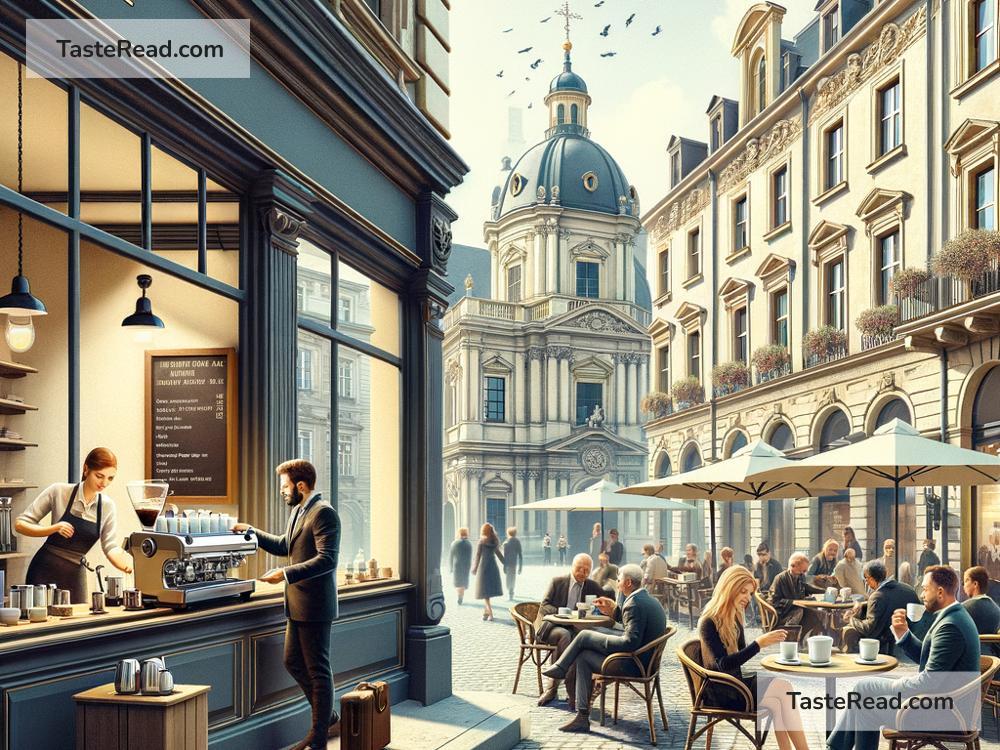The Impact of Coffee on European Culture: A Brewed Revolution
Coffee, the beloved beverage enjoyed by millions around the world today, has a fascinating history in Europe. Its journey from far-off lands to becoming an essential part of European culture is an incredible story of trade, tradition, and transformation. In this blog, we’ll explore how coffee changed everyday life, influenced art and social customs, and made its mark on European society.
Coffee’s Arrival in Europe: A Foreign Mystery
Coffee originally came from regions in the Middle East and East Africa, with Ethiopia widely considered its birthplace. In the 15th century, coffee spread to Arab nations, where it became popular for sharpening focus and sparking lively conversations. By the 16th and early 17th centuries, European travelers and traders encountered this mysterious “black drink” in the Ottoman Empire and brought it home.
At first, coffee was seen as exotic, even suspicious. Some people believed it was a dangerous drink because of its stimulating effects, and religious leaders debated whether it was appropriate to consume. However, Pope Clement VIII reportedly tasted coffee and declared it “delicious,” helping dispel doubts about the beverage. With his blessing, coffee gained popularity across Catholic Europe.
Coffeehouses: The Birthplace of Ideas
One of the most significant impacts of coffee on European culture was the rise of coffeehouses. These establishments became centers of social activity and intellectual exchange, earning them nicknames like “penny universities” (because a single penny could buy entry and a cup of coffee).
The first coffeehouse opened in Venice in 1645, followed by others in major cities like London, Paris, and Vienna. Coffee turned these gathering spots into places of discussion and debate. People from all walks of life—writers, artists, merchants, scholars—would meet to share ideas, discuss politics, and even spark revolutions.
For example, the French Enlightenment was closely tied to coffeehouse culture. Philosophers like Voltaire reportedly drank dozens of cups of coffee a day while discussing ideas about reason, liberty, and equality. These conversations helped build momentum for significant cultural and political changes, such as the French Revolution.
In England, coffeehouses were called “schools of wisdom” and attracted notable figures like Isaac Newton and Samuel Pepys. Over time, coffeehouses evolved into spaces where important business deals were made. The London Stock Exchange itself grew out of conversations held at a coffeehouse called Jonathan’s Coffee House.
Coffee and the Arts
Coffee didn’t just inspire thinkers and businesspeople—it also influenced art, literature, and music. Writers often celebrated coffee in their works, using coffeehouses as settings for stories about romance, intrigue, and intellectual discovery. Coffee also played a symbolic role in art, representing energy, sophistication, or even rebellion.
The composer Johann Sebastian Bach captured coffee’s cultural significance in a playful musical piece called the “Coffee Cantata.” In this work, Bach humorously portrays a father trying to persuade his coffee-loving daughter to give up the drink. The cantata reflects how coffee had become a widespread obsession by the 18th century.
Artists also depicted coffee in paintings and illustrations, making it a visual icon of European life. In cities like Vienna, coffeehouses were seen as cultural landmarks, where people could spend hours reading, sketching, or simply enjoying the atmosphere.
A New Social Custom: Coffee Breaks
As coffee grew more popular, it didn’t just influence intellectual life—it also changed daily routines. Drinking coffee became a cherished ritual, both at home and in public. Many Europeans started their mornings with a steaming cup of coffee, using it as fuel to energize them for the day ahead.
The tradition of gathering with friends over coffee also strengthened social bonds. In places like Italy, espresso bars became vibrant hubs for people to connect, share news, and unwind. Similarly, in Sweden, fika—a daily coffee break paired with pastries—became an essential cultural ritual, encouraging relaxation and conversation during the workday.
Coffee’s Economic Influence
The impact of coffee wasn’t just cultural—it was also economic. Coffee trade played a major role in shaping global commerce. European colonization fueled coffee production in tropical regions such as the Caribbean, South America, and Southeast Asia. Colonized lands were often turned into coffee plantations, which brought wealth to European nations but also led to exploitation of indigenous peoples and enslaved workers.
In Europe itself, coffee became an affordable luxury for many people, creating a booming industry around cafes, mugs, grinders, and more. By the 19th century, industrial advancements made coffee easier to harvest, process, and distribute, cementing its place as a household staple.
Coffee in Modern Europe
Today, coffee remains deeply woven into European life. Each country has its own unique way of enjoying the drink. Italians love their tiny, strong shots of espresso, while Scandinavians drink large amounts of coffee throughout the day. In Austria, elegant coffeehouses serve specialty drinks alongside cakes and desserts.
Even in the age of modern technology and fast-paced lifestyles, coffee continues to bring people together. Whether sipping espresso in a quaint café or grabbing a takeaway cup on the go, coffee represents connection, creativity, and comfort.
Coffee’s journey into European culture is more than just the story of a drink—it’s the story of how ideas, traditions, and communities evolve. From the first coffeehouses to today’s bustling cafes, coffee has left a lasting impression on European society. So next time you enjoy a cup, remember that it’s not just a drink—it’s a piece of history.


